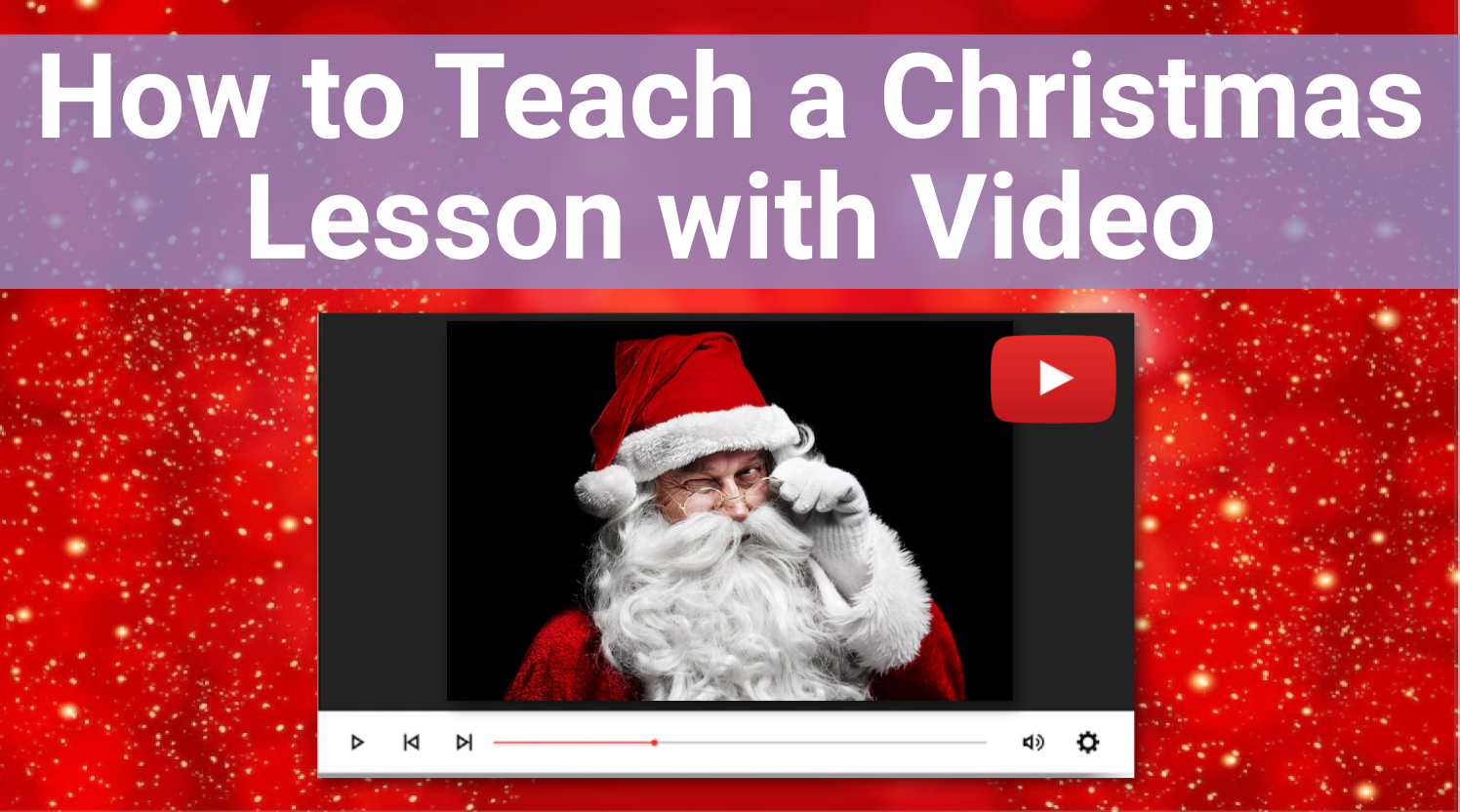How to Teach a Christmas Lesson with Video


Video lessons give ESL students a wealth of learning opportunities. Naturally, they’re great for listening practice, but never underestimate their value when it comes to teaching vocabulary and grammar. However, to really tap into the potential of video lessons, these must be thoroughly prepared and activities must be targeted to your goals.
There are two layers to video lessons. One is related to your teaching goals. Will you show your students a video for listening, vocabulary or grammar practice? What is the language element you want them to learn? The second layer is the structure of the lesson itself. Even if you're sure you want to show a video to improve listening comprehension, it's not as simple as just pressing “play”. Each video lesson must be accompanied by its own lesson plan, and the lesson plan must be targeted to meet your teaching goals. Each video lesson plan must include: pre-viewing activities, viewing activities, and post-viewing activities.
Here are some strategies for each type of activity:
Pre-viewing activities
The pre-viewing activities would be like the warm-up exercises that we usually have for other types of activities. There are several pre-viewing activities you could do, but try to use those that are aligned with your goals.
Viewing activities
Viewing activities consist of tasks that students must complete while watching the video, and these should also be targeted to your goals:
Activities should focus on helping students learn and retain the new words introduced in the pre-viewing activity. One great way to do this is to give students a worksheet with sentences with gaps that students must fill with the new words. Students watch the video and complete the sentence with the missing word. Students may also be asked to look for specific information. In this Winnie the Pooh and Halloween video worksheet, young learners are required to identify the costumes each of the characters are wearing, and they can easily do this while viewing.
Gap filling exercises also work great, but for this goal, gaps should be longer, and students should be required to fill them with information rather than just new words. Comprehension questions are always a great way to test listening comprehension. You may choose to give them a few questions to focus on before the video starts.
Also, you may choose to introduce different levels of listening. Start by covering the TV or computer screen with some cardboard or cloth, and have students only listen to the video. Then, they answer some general comprehension questions about the gist of what they heard. Then, have them watch a second time, but this time listening and viewing, and ask them to complete a gap filling exercise. Finally, ask them to watch for a third time, but this time they have to raise their hands every time they hear the answer to a more specific question. You can introduce as many levels and as many viewings as you want, but make sure each level is more challenging than the previous.
Because of their very nature (songs are usually short and often repeat phrases, words, and structures), music videos are the best for practicing grammar. We Are the Champions by Queen is a great song to use to practice the present perfect. Frank Sinatra's New York, New York shows students ways in which the future with going to and will can be contracted. The most common type of viewing activity with music videos is a gap-filling exercise, but you can get creative and try some others – see some good examples in this Eurovision song worksheet.
Post-viewing activities
Post-viewing activities are a nice way to wrap-up the video lesson and a great opportunity to consolidate everything your students have learned in a production or performance activity.
First you introduced some new words, then, your students saw how they were used in the video. Now is the time for your students to use these new words themselves. Divide them into pairs, and ask them to write a conversation or report using this new vocabulary. If your goal was to teach vocabulary related to weather, and you showed a video of a TV weather report, ask your students to write the weather forecast for next weekend.
Your goal was to improve your students’ listening skills, so ask them to produce something that shows just how much they understood. This production may be anything from a picture, a PowerPoint presentation that summarizes the video, or a role play.
If your goal was to offer some extra grammar practice, ask them your students to produce something that specifically requires them to use this grammar point. Let’s say you showed them an interview in which an actor talks about his life to practice the past simple tense; your students can write a short biographical report on what they learned about his life.
The best part of incorporating video lessons into your ESL classroom is the vast amount of material available, from short news pieces on CNN.com to a full episode of a popular TV series, a movie trailer or a full-length feature film on special occasions. Just remember to include the right pre-viewing, viewing, and post-viewing activities and you’ll hit your target every time!